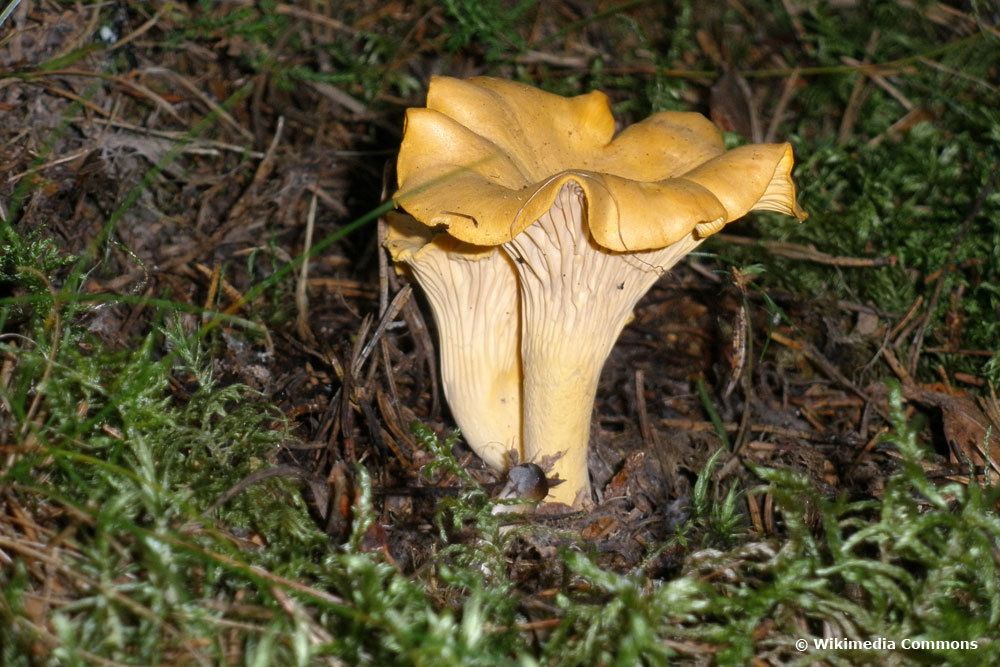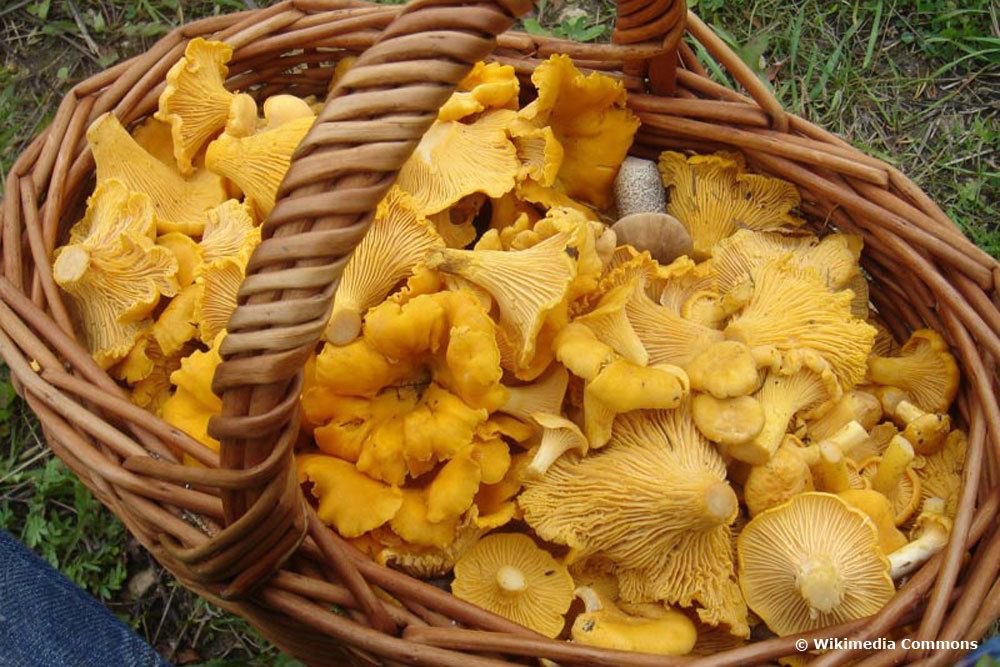Last updated on October 23rd, 2023 at 08:45 pm
Chanterelles are demanding and do not grow at any time of the year. Those who are familiar with the harvesting season leave the forest with a bulging collection basket. This guide will familiarize you with all the information about the chanterelle season.
Contents
Main season is in summer
Golden yellow chanterelles arouse the passion for collecting among enthusiastic friends of freshly harvested mushroom dishes. To indulge in the pleasurable hobby, the window of opportunity is limited. Popular edible mushrooms consistently refuse to grow under controlled conditions of commercial cultivation, like mushrooms available year-round. The only option for a bulging basket of crisp, dewy chanterelles is a foray into the woods. The date must be chosen wisely, because the yolk-yellow natural treasures thrive according to the motto: If you want to be popular, make yourself rare. Because nature does not like to be forced into a fixed schedule, the following information is based on experience:
- peak season: end of June/beginning of July to mid/end of October
- early start of the harvesting season: depending on the weather, from mid/end of May
- extended harvest season: weather-dependent until mid/end of November

The climate has the last word on the beginning and end of the collecting season. Which three weather phenomena explicitly affect the chanterelle season, you will learn in the following sections.
Influencing factors
Three weather phenomena are directly related to the chanterelle harvest season. We are talking about meteorological singularities that occur or fail to occur at certain times of the year for no apparent reason. If the Ice Saints fail, the window of opportunity for the season opens in parallel with the beginning of the planting season in the garden. If October treats us to a glorious Indian summer, the gathering season extends well into the fall. Sometimes the cold weather still interferes and puts expectant mushroom pickers on the rack for a particularly long time.
An old farmer’s rule is closely connected with the commemoration days of five saints between May 11 and 15. Accordingly, a stable, frost-free weather situation can only be expected from May 15 onwards, when the last Ice Saint has taken her leave with the cold Sophie. As a result of global warming, mild temperatures often prevail from the beginning of May, so that there is no longer any question of ice saints. Then already from the middle of May golden-yellow chanterelles laugh at you from the foliage cover of the forest.
With bright sunshine and midsummer temperatures, Indian summer activates the growth of chanterelles. Imperial weather well into October doesn’t miss chanterelles and they continue to grow briskly. Thanks to the welcome extension of the season, the delicate mushrooms are on the domestic menu until All Saints’ Day.
The disruptive factor for a long harvest season is the cold weather. With harsh weather, the phenomenon makes heat-loving chanterelles shiver, which then postpone their start of growth until conditions improve. The meteorological singularity sometimes occurs around June 11 with winter-like cold spells. In recent years, however, the climatic evil has been rare.

Note: Did you know that there is a legal limit for collecting chanterelles? The coveted edible mushrooms are subject to the Federal Species Protection Ordinance. According to Section 1, § 2, chanterelles may only be taken from the wild in small quantities for personal use. Depending on the region, the permissible quantities are between one and two kilograms per mushroom picker.
In muggy, warm weather, chanterelles turbo-charge and flood the forest floor with promising mushroom caps. Hot summer weather with a tendency to thunderstorms attracts mushroom pickers in droves to the forest for bountiful picking trips. Humid warmth makes the mushrooms literally shoot out of the ground. Those who are familiar with the special preferences of chanterelles can find the most beautiful specimens. This is how it works:
- typical occurrences: near the roots of spruces, firs, pines, oaks and beeches
- promising locations: light, east-facing slopes with young, regrowing copper beeches
- frequent sites: loose soil, covered with the foliage of old beeches
- best time of day: in the early morning hours in warm and humid conditions
- continue searching: a chanterelle rarely grows alone
- consider the danger of confusion: check each chanterelle individually

A finger test reveals poisonous doppelgangers of chanterelles. All edible chanterelle species thrive as Leistlings with firmly fused ledges under the cap that run down the stem. False chanterelle (Hygrophoropsis aurantiaca) and poisonous oleaster (Omphalotus olearius), on the other hand, are lamellar or leafy mushrooms. However, the narrow leaves under the cap can be detached and moved with light finger pressure.


